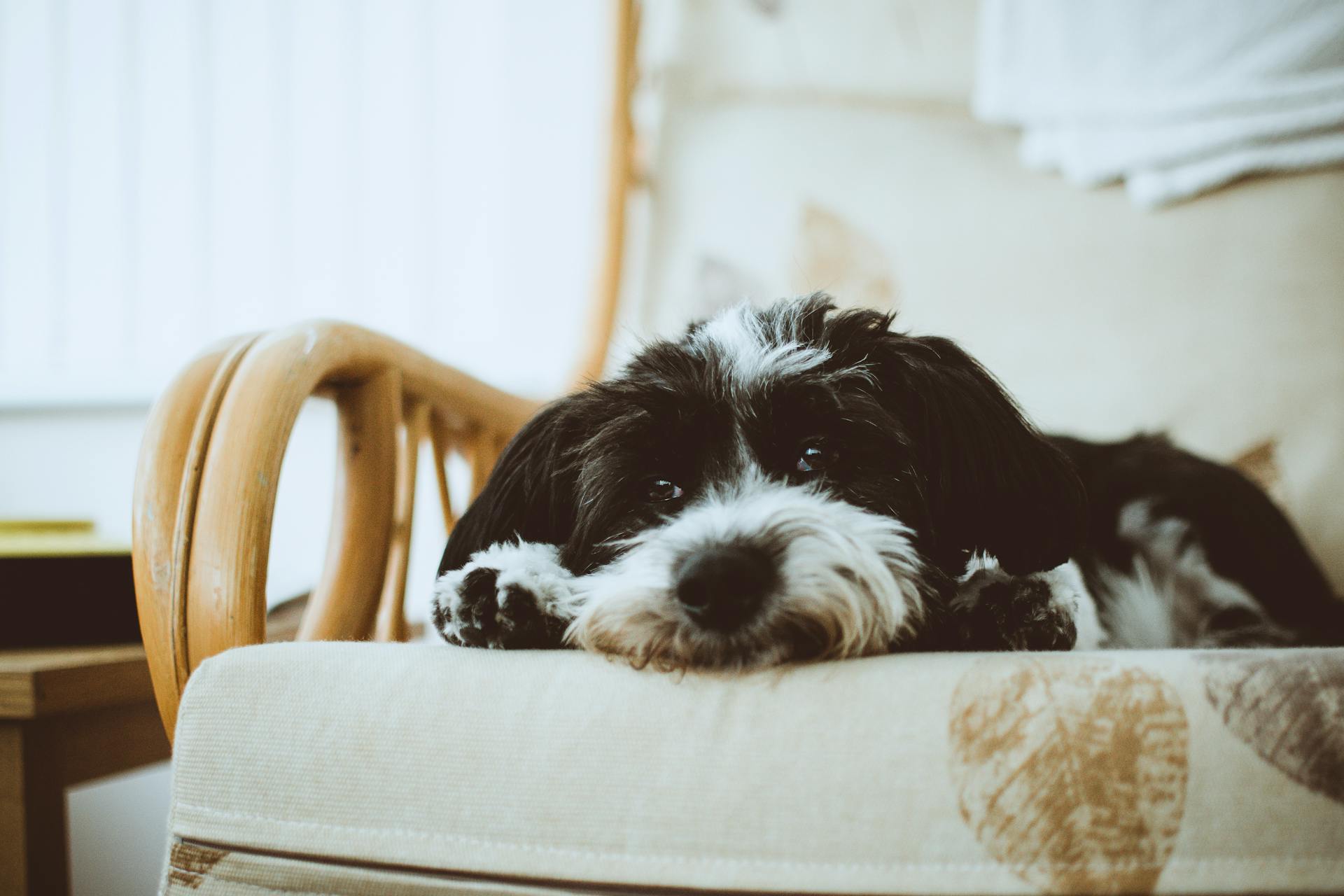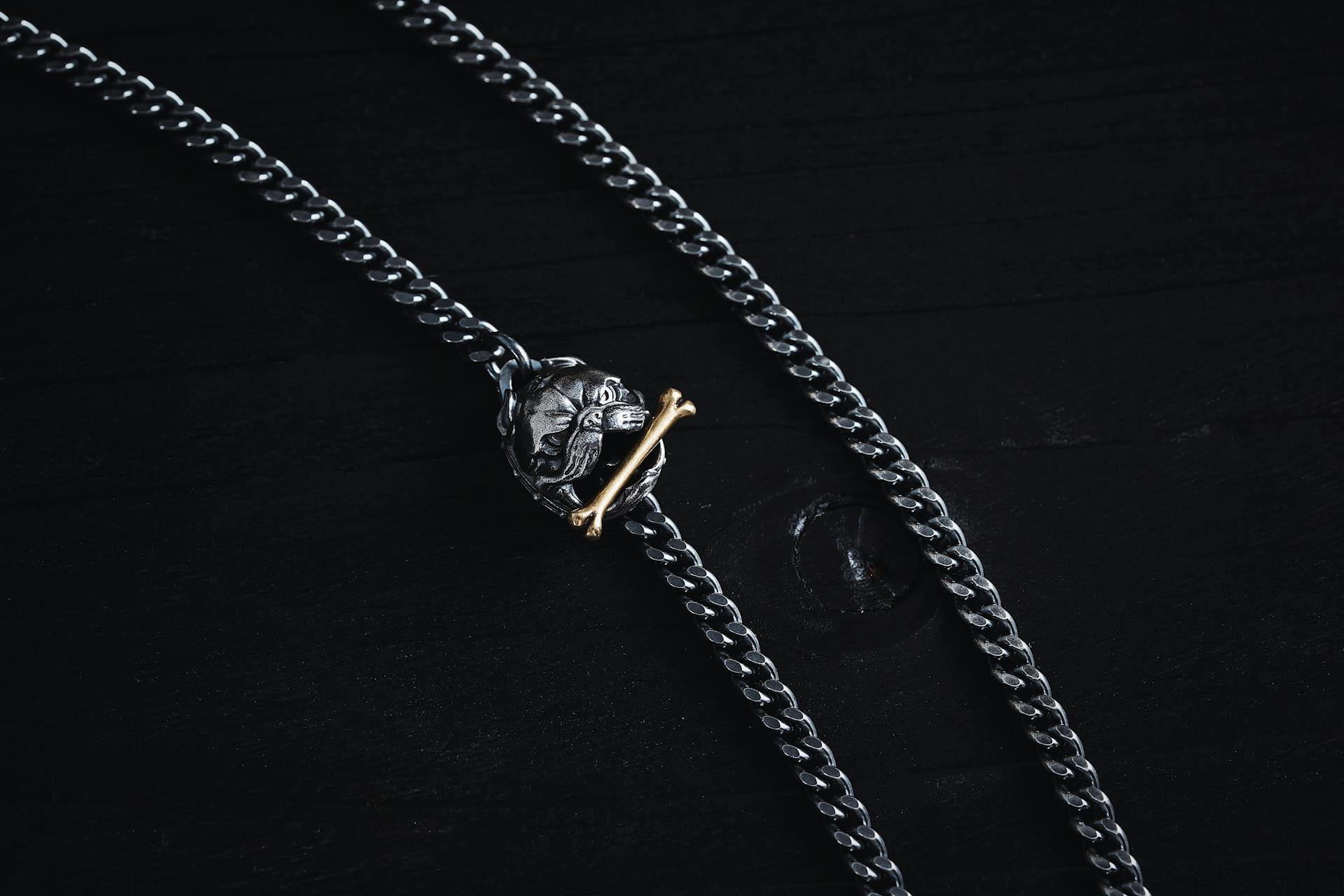
The Havanese is a small, playful dog breed that originated in Cuba. They weigh between 7-13 pounds and stand 8.5-11.5 inches tall at the shoulder.
Their thick double coat requires regular grooming to prevent matting and tangling. It sheds minimally, making it a good choice for people with allergies.
Their friendly, outgoing personalities make them great companions for families and individuals alike. They thrive on human interaction and can become destructive if left alone for long periods.
Their intelligence and trainability make them easy to teach tricks and commands.
Caring for a Havanese
Caring for a Havanese is a big responsibility, but with the right approach, it can be a breeze. Havanese dogs don't have any special nutritional requirements as long as they're eating high-quality, balanced diets.
They need to eat several times daily to get all the nutrients they need to grow strong and healthy, especially as puppies. Adult dogs, on the other hand, are fine with two or three daily meals.
Daily brushing is a must to keep their coats free of mats and tangles, but most Havanese dogs actually enjoy being brushed. It's a great bonding activity that can help strengthen your relationship with your furry friend.
Food & Diet
A Havanese's diet is a crucial aspect of their care. They don't have specific nutritional requirements, but they do need high-quality, balanced diets.
To ensure your Havanese is getting the nutrients they need, look for formulas that display the Association of American Feed Control Officials' statements of nutrition adequacy.
Smaller dogs like Havaneses benefit from small-breed diets designed for their life stage. Puppies, for example, need to eat puppy formulas.
Adult Havanese dogs are fine with two or three daily meals. Portioning their meals with a measuring cup can help prevent overconsumption.
Puppies usually need to eat several times daily to get all the nutrients they need to grow strong and healthy.
You might enjoy: Havanese Feeding Chart
Grooming
Grooming is an essential part of caring for a Havanese dog, and it's actually a great bonding experience for both you and your furry friend.
Daily brushing is a must to prevent mats and tangles in their beautiful coats.
Most Havanese dogs enjoy being brushed, and it's a wonderful way to spend quality time together.
Regular trips to the groomer for trims can keep your Havanese looking their best and make maintenance at home a breeze.
Short, adorable puppy cuts are a popular option, and some owners prefer styling their pets with "corded" cuts.
Their facial hair requires special trimming to ensure it stays out of their eyes.
Regular eye and ear checks and cleaning are also crucial to prevent infections.
Removing wax and debris from their ears can help keep ear infections at bay.
Nail trims are a must for all dogs, including Havanese pups.
Dental hygiene is incredibly important for Havanese dogs, as they're vulnerable to dental disease.
Regular brushing of their teeth is essential to keep their teeth healthy and strong.
Broaden your view: Dogo Argentino Teeth
Havanese Temperament
Havanese dogs are fun and full of life. They're incredibly smart and usually easy to train.
Their small stature means they don't require excessive exercise and are well suited for smaller spaces. They're happy to play or go for a walk, but they don't need to run marathons.
Havanese dogs are prone to developing separation anxiety when they're left to fend for themselves for too long. They're most comfortable in homes where they have companions to hang out with.
In general, these dogs are moderately high energy, eager to please, happy, and affectionate. They love to be part of a family and are considered intelligent.
Their mischievous expression seen in those big eyes will win your heart in a second. They're very alert and playful even as adult dogs, but not naturally hyper like many other toy breeds.
Havanese dogs usually fit right in with families, particularly when they have solid early socialization training that helps them learn how to behave in different situations. They're excellent companions for children due to their lively nature and comical antics.
Havanese Growth and Size
A 6-month-old Havanese puppy will be at their adult size or close to it, weighing between 6 to 8 pounds and standing between 8.5 to 11.5 inches tall.
A unique perspective: 6 Month English Mastiff
You can expect your Havanese puppy to reach their weight and height by six to eight months old, which is relatively quickly compared to large breeds.
A Havanese puppy's paws can give you a clue about their growth stage - if their paws are still oversized next to their legs and body, they likely still have growing left to do.
The American Kennel Club Official Havanese Breed Standards state that an adult Havanese should weigh between 7 and 13 pounds and stand between 8.5 and 11.5 inches tall at the shoulders.
Here's a rough estimate of a Havanese puppy's weight at different ages:
Keep in mind that these are just estimates, and your puppy's health is the most important factor - if you notice any significant deviations from these ranges, consult with your veterinarian.
Owning a Dog
Owning a Havanese dog requires some effort, but it's definitely worth it. They make remarkable pets.
Havanese dogs are excellent companions for families, especially with solid early socialization training. This helps them behave well in different situations, such as around kids.
They're lively and comical, making them great with children. However, they should be supervised when interacting with infants.
Havanese dogs are adaptable to different living situations, but they do need regular grooming to prevent matting and tangling of their fur.
Havanese Health and Veterinary
Havanese dogs are generally a healthy breed, but they can be prone to certain health conditions. These conditions include Legg-Calve-Perthes disease, progressive retinal atrophy, patellar luxation, and dental disease.
Eye problems and chondrodysplasia are relatively common in Havanese dogs. Regular veterinary check-ups can help identify these issues early on.
Preventing health problems is always better than treating them. Your veterinarian can screen your Havanese puppy for genetic diseases and provide personalized recommendations for a healthy lifestyle.
Routine veterinary care can help preserve your pup's health and overall happiness. This includes regular check-ups, vaccinations, and dental cleanings.
Explore further: Havanese Eye Problems
The Havanese breed is prone to inflammatory skin disease, liver shunts, and eye problems like cataracts and retinal atrophy. These conditions can be costly to treat.
Here are some common health issues that affect Havanese dogs:
- Patellar Luxation
- Dental Disease
- Eye Conditions
- Chondrodysplasia
- Legg-Calve-Perthes Disease
- Progressive Retinal Atrophy
Cataract surgery can cost between $2,700 and $4,000. Pet insurance can help cover some of these costs, providing a safety net for pet owners.
Havanese General Information
The Havanese breed is a small but mighty companion dog, standing between 8 to 11 inches tall and weighing an average of 7 to 13 pounds.
Their silky coat comes in a variety of colors, including cream, tan, sable, and white, and requires regular grooming to prevent matting and tangling.
Havanese dogs are known for their fun, smart, and social nature, making them an excellent fit for families with solid early socialization training.
Breed History
The Havanese dog breed has a rich history that spans centuries. They originated in Cuba in the 1600s, brought by Spanish colonizers or Italian seafarers.
Their ancestors were popular among the island's social elite, who favored their lively and charming nature. This is evident in how they differed significantly from the working dogs favored by the working class.
The Havanese breed was refined with Poodle crosses, which helped them develop into the dogs they are today. This crossbreeding played a crucial role in their evolution.
Havanese dogs were particularly popular in Havana, which is where they got their name. It's no surprise, given their charming and affectionate nature.
On a similar theme: Pug Dog Nature
What Do They Look Like?
The Havanese is a small breed, standing between 8 to 11 inches tall. Their weight ranges from 7 to 13 pounds when they're full-grown.
Their coats come in a variety of colors, including cream, tan, sable, and white. They're not prone to much shedding, which makes them a great choice for people who don't want to deal with constant dog hair cleanup.
However, their non-shedding coat does require more care than other breeds. They need regular grooming to prevent their coat from becoming matted and tangled.
For your interest: Hungarian Vizsla Coat
Dogs Have Been Referred to by Various Names
Havanese dogs have been known by several names over the years.
One of these names is Havana Silk Dogs.
The Havanese breed has also been referred to as Spanish Silk Poodles.
The AKC hasn't recognized a separate modern Havana Silk breed.
Three Little-Known Facts
The Havanese is a breed with a rich history, and here are three little-known facts to impress your friends.
The Havanese is a relatively small dog, weighing between 7-13 pounds, but they have a big heart and require regular exercise to stay happy and healthy.
One of the most interesting things about the Havanese is that they are a rare breed, with only around 10,000 registered worldwide each year. This makes them a unique addition to any family.
Despite their small size, Havanese dogs are intelligent and trainable, requiring regular mental stimulation to prevent boredom and destructive behavior.
Intriguing read: Small Munsterlander Puppies
Frequently Asked Questions
What two dog breeds make a Havanese?
The Havanese breed is believed to have originated from the cross-breeding of the Blanquito and the poodle. This unique combination of breeds resulted in the Havanese's distinctive characteristics.
Featured Images: pexels.com


